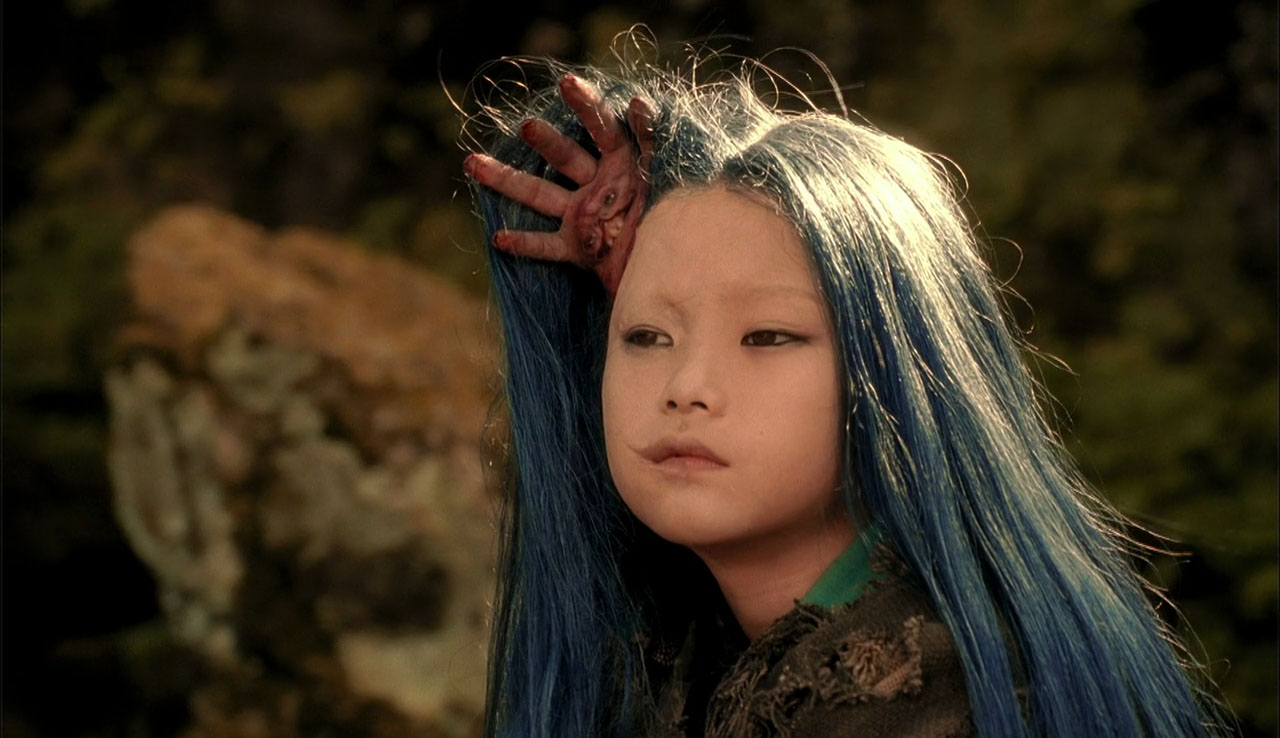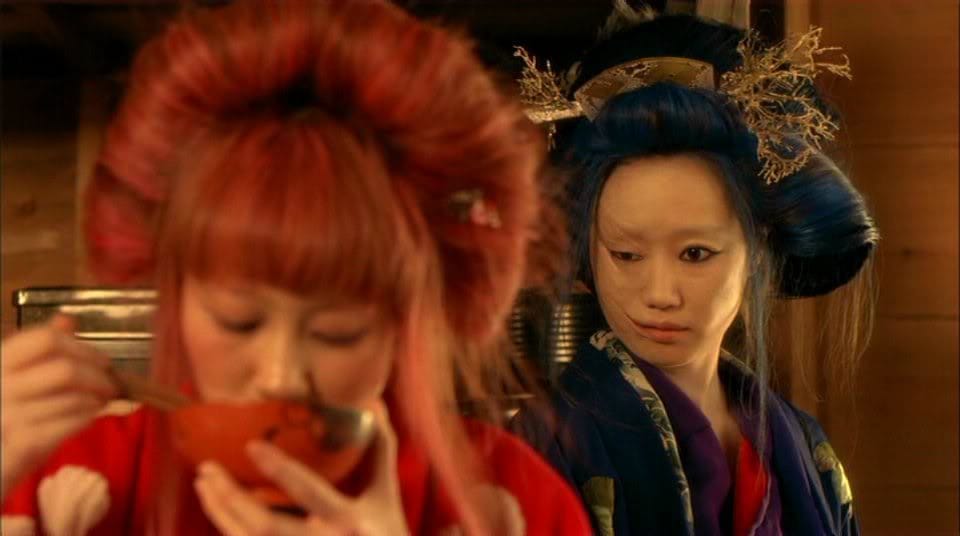Mick Garris is most known for his Stephen King adaptations and as the leader of the ‘masters of horror,’ a global network of horror writers and directors. For years, horror specialist Mick Garris organized a series of dinners that brought together the industry’s finest, and now he is extending the concept by curating a horror anthology series for Showtime called Masters of Horror. Attendees at the dinners, including Don Coscarelli, Stuart Gordon, John Carpenter, Dario Argento, Joe Dante, and others, wrote and directed each hour-long episode. This video delves into Takashi Miike’s contentious episode “Imprint.”
The anthology program, on the other hand, has never entirely evaporated, even during difficult times like the 2000s. One of the few films to emerge from that decade was Masters of Horror. Each episode was essentially a short, just-short-of-a-feature-length horror film directed by a well-known horror director. Beginning in 2005, when Showtime decided not to renew it, Masters of Horror aired for only two seasons.
Showtime, on the other hand, declined to air Takashi Miike’s first season episode, Imprint. Because of the unpleasant and gory content, the program was canceled. For the Masters of Horror episode Imprint, Miike developed a Kaidan (a traditional Japanese scary story) based on Shimako Iwai’s novel Bokkee, ky. The title is an Okayama word that basically translates to “very terrifying.”
Miike depicts a repulsive depiction of Japanese mythology as well as an illogical and terrible love story. From the beginning, with the pregnant corpse hanging above a river, to the whorehouse with the many deformed prostitutes, especially the narrator, to the highly graphic torture scenes that leave nothing to the imagination, to the elements of incest and pedophilia, this is clearly an extreme film aimed solely at the most die-hard fans of exploitation and splatter.
A love story with a dark, gruesome truth

Imprint, like the conventional Kaidan, is a period piece. It follows Christopher, a Victorian-era American journalist portrayed by Billy Drago, as he travels around Japan to pursue his lost love Komomo, a prostitute he once swore to rescue and return to America. His quest takes him to a lonely brothel island where no one has heard of Komomo, save for one crazy and deformed prostitute who swears Christopher’s love has perished. He is distraught and demands to know-how. The deformed prostitute tells Christopher several “true” stories about Komomo’s death, each more gruesome than the previous.
This means it begins innocently enough, except for the ugly syphilitic brothel worker who encourages Christopher to engage the imprisoned prostitutes. You start to wonder what prompted Showtime executives to cancel the episode. After that, the complicated procedure begins. A sequence that seems like a great complement to Audition, with needles plunged slowly and with extreme precision into nailbeds and lighted incense used to burn sensitive regions of skin.
But there’s a catch: a beautifully choreographed five-minute all-female torture scenario in which a half-naked, gagged, and tied Japanese actress is seen being singed with flaming incense at her armpits and having knitting needles pushed into her fingernails and gums. Other portions of the film are dominated by various grotesquery and exoticism spectacles. The harsh realities of rural poverty are masked by a bright procession of outrageous costumes.
Domestic abuse, pedophilia, abortion, murder, rotten corpses, and gory fetuses are juxtaposed with moments of introspective beauty. Miike essentially constructs many stories within a single account; he keeps us guessing as much as he can, twisting truths and bending reality as our protagonists descend towards insanity.
It’s a problematic voyage with many raw moments. If Miike falls short, it’s in delivering the final shock, which falls short of the effect it should have while being sufficiently weird. Imprint is certainly a deceptive piece of cinema; it may even upset viewers who don’t want a tedious cerebral journey, but it is also an oddly captivating piece of art.
Christopher, who is distraught, finds refuge in Sake. As he drifts off to sleep, he wants a bedtime tale. After her father died, her mother, a midwife, was forced to sell her to a brothel, and she finally ended up on the island. Komomo was the most popular girl there, and the others were envious of her. Komomo was forced to confess after the Madam’s jade ring was stolen. She hanged herself in agony after suffering horribly — bored of waiting for her boyfriend. Christopher is skeptical of the girl’s claim and begs for the absolute truth.
The girl begins again, and her family is no longer joyful or loving in the second recounting; her father was an alcoholic, and her mother was an abortionist. She was taken in by a Buddhist monk, who allegedly abused her and instilled a fear of damnation. Her father did not die of lung disease; she murdered him for raping her. She recounts being sold into prostitution once more.
Still, she provides a different account of Christopher’s beloved Komomo’s tragic destiny this time. Despite Komomo’s goodwill in befriending her, the deformed girl took the jade ring. She planted Komomo’s hairpin to incriminate her — and then murdered Komomo after being tortured. She reveals to Christopher that she planned to spare Komomo from hell. Because Komomo would be damned for having such a wicked friend, she could only end the bond and secure Komomo a properly lovely afterlife via treachery.
Christopher is losing control and is sure that something has been left out. He asks to be told the entire truth. The lady then exposes a shocking secret: a tiny second head in the center of a hand concealed behind her hair — her “Little Sis,” a parasitic twin, the woman’s identity now partially exposed like that of a Futakuchi-onna, a sort of supernatural person. Her mother and father had been brother and sister, and “Little Sis” resulted from their incestuous relationship. “Little Sis,” told her to murder her father and grab the ring.
As the hand begins to speak in a high-pitched voice like Komomo, Christopher is overtaken with rage and threatens to shoot her and send her to hell. She warns him that he will end up in hell no matter where he goes – a flashback reveals that he was responsible for his sister’s death. He shoots the girl in the heart and then through the head. The girl’s body transforms into Komomo before she dies.
Imprint seems quite similar to his more recent works, Yokai Daisenso and Box, completed just before his career on his Masters of Horror contribution. The topics he tackles here are generally similar to those discussed earlier, making it seem like he’s trying to satisfy a certain yearning for one more hit. Imprint is a film that focuses on humanity as much as it disturbs the audience.
Miike employs deformity in one case to go deeper into the human mind and emphasize inherent prejudice that may hurt a person more than their face. Still, he uses it as an intelligent ruse to take the spectator off guard for a later twist. He also focuses on things that are difficult to shoot, such as child abuse, rape, incest, and sexism — a laundry list of taboo problems that go well beyond the heinous pictures he may have shown previously, and which undoubtedly led to the film’s eventual prohibition. On the other hand, Miike does not abuse the material but rather delicately treats it.
That may seem absurd, especially when we see baby fetuses being dumped in rivers and mothers being savagely beaten, but it’s all underpinned by a tragic tale of damnation; these moments serve their purpose regardless of how grotesque or distasteful they may appear, and similar symbolic gestures are littered throughout.
Why should you watch the Imprint?

Watching Imprint is odd in specific ways. Say what you want about its visual nature – that it’s too gory for American television, and so on – but this is Miike doing what he does best. It’s as if he rolled together segments from several of his films while maintaining his no-holds-barred attitude toward an unwary western audience.
Those unfamiliar with Miike’s collection of work will be astonished, maybe repulsed, and rightfully so. Looking past the film’s showcase of Miike’s distinctive abilities, it’s easy to see why it was so tricky for Showtime. He begins slowly, as usual, and gradually takes us into his macabre world of Rampo stylings, building up the essential suspense before revealing the film’s magnum work.
As is typical of Miike’s films, there is a great deal of artistry to be found here, particularly in the production’s visuals. Toyomichi Kurata’s cinematography portrays the hellish world the film takes place in with very fitting maximalism, particularly in the use of color. At the same time, Takashi and Hisashi Sasaki’s production design, Shinsuke Kojima’s art direction, Hiroshi Tanaka’s set decoration, and Michiko Kitamura’s impervious costumes result in a genuinely phantasmagoric result.
Yasushi Shimamura’s editing connects the various timelines to highlight the film’s nightmarish premises. At the same time, the relatively slow pace complements the film’s aesthetics quite nicely. The eye-catching images are complemented with inventive body horror components and unusual makeup. The brutal torture sequence in Imprint features some very terrifying sound effects. However, it is more restrained than some would have you believe. On the other hand, Miike decided to throw caution to the wind and chuck fetuses at toddlers. Having said that, this film was created to be shown on television.
Those familiar with Miike’s varied output might easily foresee him creating anything that will offend; his films don’t simply challenge limits; they steamroll right past them. Dead or Alive, Ichi the Killer, Audition, and Visitor Q all had taboo-breaking moments that made you squirm, cringe, or gag (often all three at once). His filmography is broad, ranging from kid-friendly material to westerns to more conventional fare. Still, his work in the horror and genre realms has gained him international acclaim. Imprint is almost deliberately provocative and divisive.
To be sure, if being offensive and controversial is what it takes to be a master of horror, Miike should be called the grandmaster of horror. Even prominent members of the horror academy, such as Tobe Hooper, John Carpenter, and Dario Argento, could not claim to have done their studies so thoroughly that they had to be coaxed to fall into line by their network bosses.
Controversy, on the other hand, rarely helps one’s reputation, and Miike’s credibility as a filmmaker looks to have suffered as a result of this production. While few critics deny that Imprint is shocking, almost no one is willing to take Imprint seriously.
On the other hand, the story and, to a lesser extent, the actions appear to exist solely to provide context for the gore and overall exploitation elements. The female leads, Michie Ito, Youki Kudoh, Toshie Negishi, and the cult figure of Mame Yamada, are bearable in the context. Still, the same cannot be said for Billy Drago in the role of Christopher, who is probably the worst part of the film, even though the writing did not help him at all. Of course, the fact that Miike made his Japanese actors speak in English several times, due to a studio decision, did not assist their performances.
Miike’s horror is always deeply personal; he taps into the very things that make us genuinely uneasy. There’s no outrageous gore or over-the-top mutilations here, just pure horror. To make matters worse, he draws out the scenario for what feels like 10 minutes, which may be seen as way too gratuitous and self-serving, but there’s no denying its force. Nonetheless, “Imprint” is a film that fully justifies the infamous label, both for itself and for Miike, and one of the films that stand out in the vast filmography of the Japanese master. Fans of splatter films will undoubtedly enjoy this.
